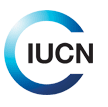An International Union for Conservation of Nature (IUCN) report says that increasing the number of visitors to protected areas can be an effective tool for conservation and community development, as long as well-functioning management systems are in place.
The report, ‘Tourism and Visitor Management in Protected Areas: Guidelines for Sustainability,' was launched during the IUCN World Parks Congress in Sydney, Australia.
 14 November 2014: An International Union for Conservation of Nature (IUCN) report says that increasing the number of visitors to protected areas can be an effective tool for conservation and community development, as long as well-functioning management systems are in place. The report, titled ‘Tourism and Visitor Management in Protected Areas: Guidelines for Sustainability,’ was launched during the IUCN World Parks Congress in Sydney, Australia.
14 November 2014: An International Union for Conservation of Nature (IUCN) report says that increasing the number of visitors to protected areas can be an effective tool for conservation and community development, as long as well-functioning management systems are in place. The report, titled ‘Tourism and Visitor Management in Protected Areas: Guidelines for Sustainability,’ was launched during the IUCN World Parks Congress in Sydney, Australia.
It includes contributions from more than 50 experts from 23 countries and territories, and examples from over 45 countries, from Machu Picchu in Peru to the Damaraland Camp in Namibia.
Yu-Fai Leung, chief editor of the report, said that, unlike other industries and human-driven activities, tourism in protected areas can be “a strong positive force,” increasing a sense of stewardship and critical revenues for the long-term protection of conservation areas.
According to IUCN, international tourism accounts for up to 9% of global gross domestic product (GDP), with tourism expected to continue to grow by 3.3% annually through 2030 and to generate one in twelve jobs globally. Governments, protected area agencies, tour operators, retailers and local community members can all benefit from tourism revenues and directly support the protection and/or rehabilitation of habitat areas. However, the report states that where visits to protected areas have declined, such as in Canada, Japan and the US, parks have suffered from reduced political support and funding.
The report recognizes challenges faced by protected area managers, including climate change, illegal wildlife trade, inadequate infrastructure and competition for natural resources. However, with proper management, an increase in visitors can generate revenues from entrance fees, tours, accommodation and concessions, which can then be reinvested in conservation activities.
The report highlights the importance of identifying and evaluating the true costs and impacts of tourism in protected areas. It also contains guidelines for promoting positive impacts in protected areas, including: clearly identifying and linking biodiversity benefits, which can support better monitoring and evaluation; engaging tourism stakeholders in local legislation and the development of policy frameworks; assisting in the education and capacity building of local people to support tourism; using tourism revenues to enhance education, healthcare and infrastructure in local communities; ensuring tourism revenues are invested in conservation management; and encouraging collaboration and partnerships between protected area authorities, the private sector and the local community. [IUCN Press Release][Publication: Tourism and Visitor Management in Protected Areas: Guidelines for Sustainability (Review Copy)][Project Website][IISD RS coverage of the IUCN World Parks Congress]